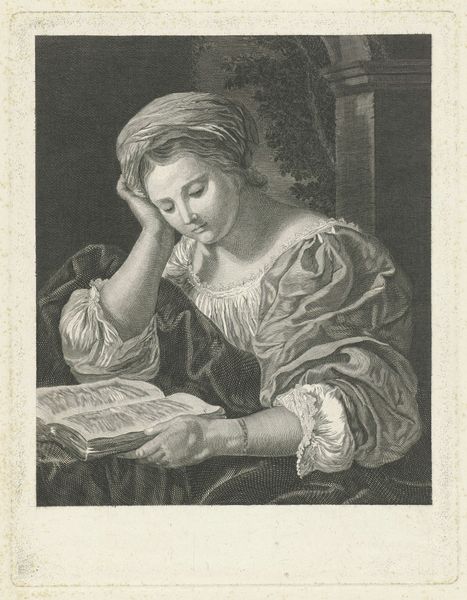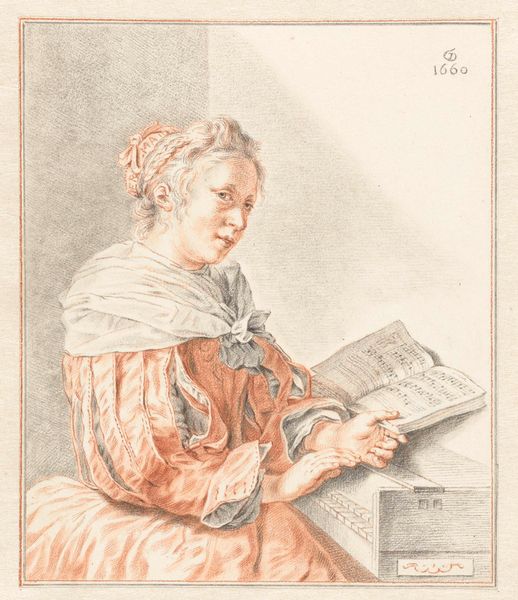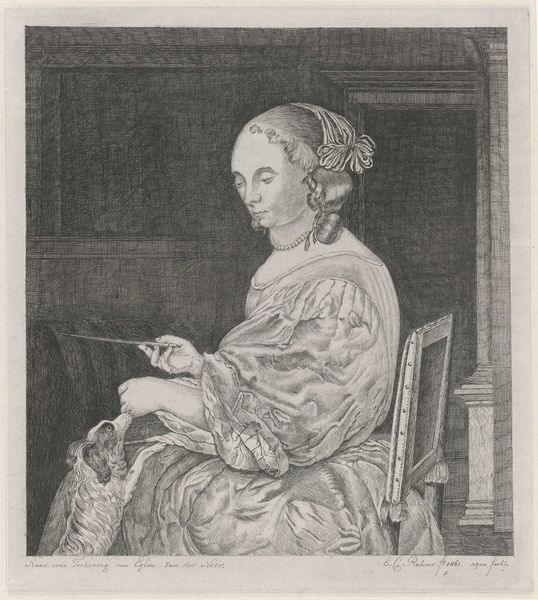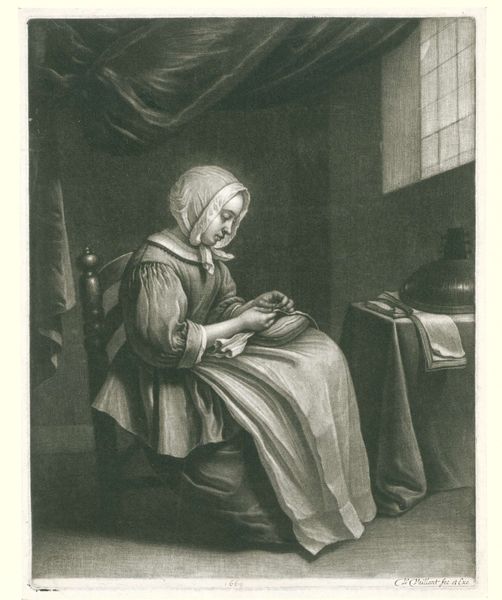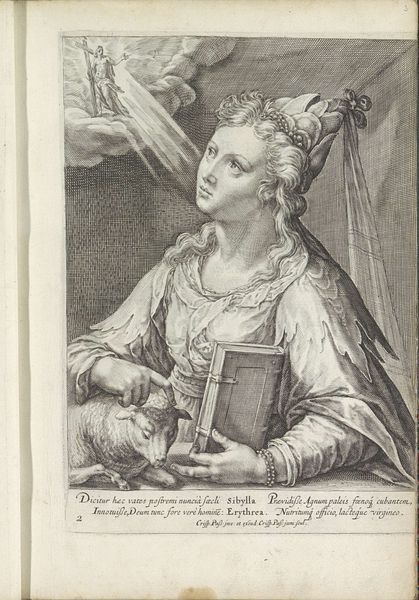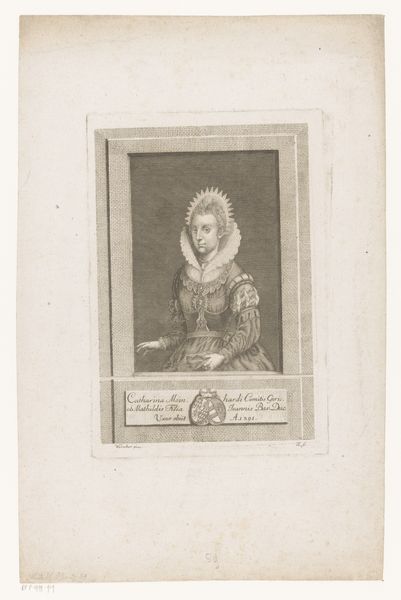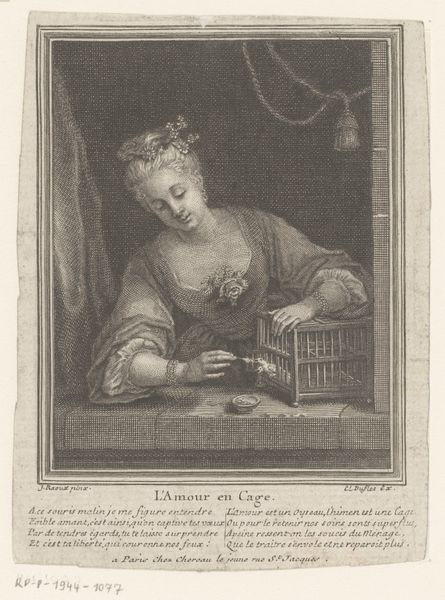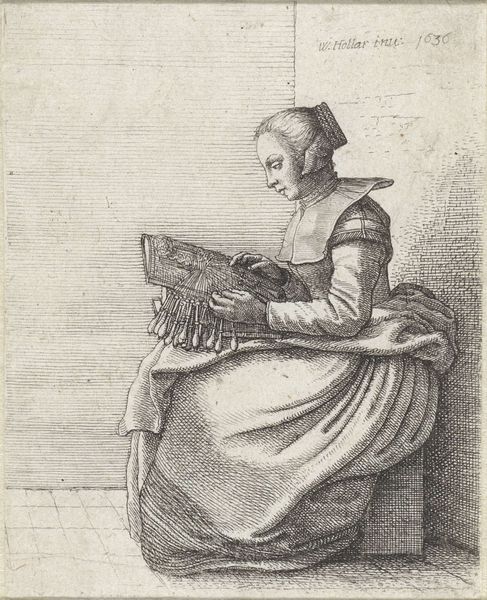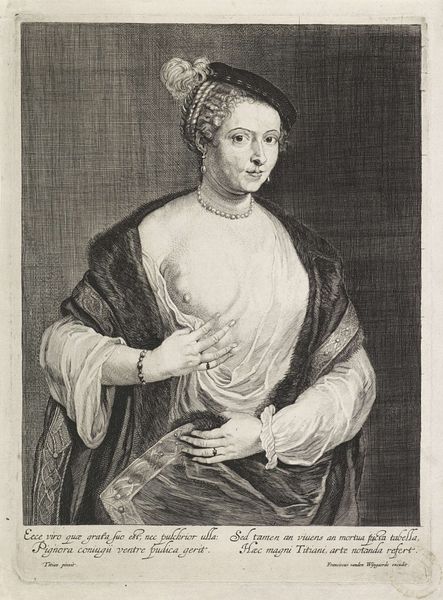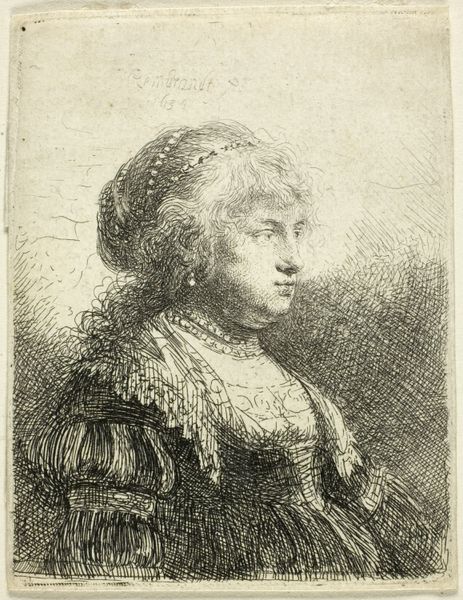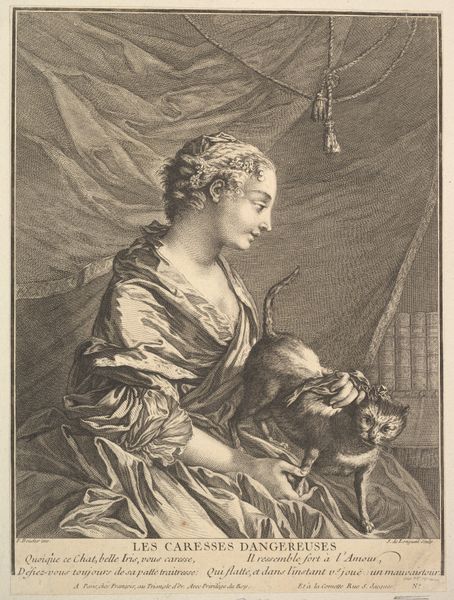
drawing, print, etching
#
portrait
#
drawing
#
baroque
# print
#
etching
#
figuration
#
genre-painting
Dimensions: height 53 mm, width 47 mm
Copyright: Rijks Museum: Open Domain
This tiny image, "Lezende Vrouw," or "Reading Woman," was made by Willem Basse in the 17th century using etching. The image is built up from many small marks, made by drawing through a waxy ground on a metal plate. When acid is applied, it bites into the exposed metal, leaving behind lines. The plate is then inked and printed, transferring the image to paper. The fine lines create a sense of depth and texture, especially in the woman's fur-trimmed robe and the pages of the book. Etching allowed artists to create multiples of an image, making art more accessible. However, it was also a labor-intensive process requiring skill and precision. The dense network of lines speaks to the amount of time and work involved in creating this small but intricate work. By understanding the labor involved in the etching process, we can appreciate the skill and artistry of Willem Basse and recognize the role of printmaking in the wider social and economic context of 17th-century art.
Comments
No comments
Be the first to comment and join the conversation on the ultimate creative platform.
